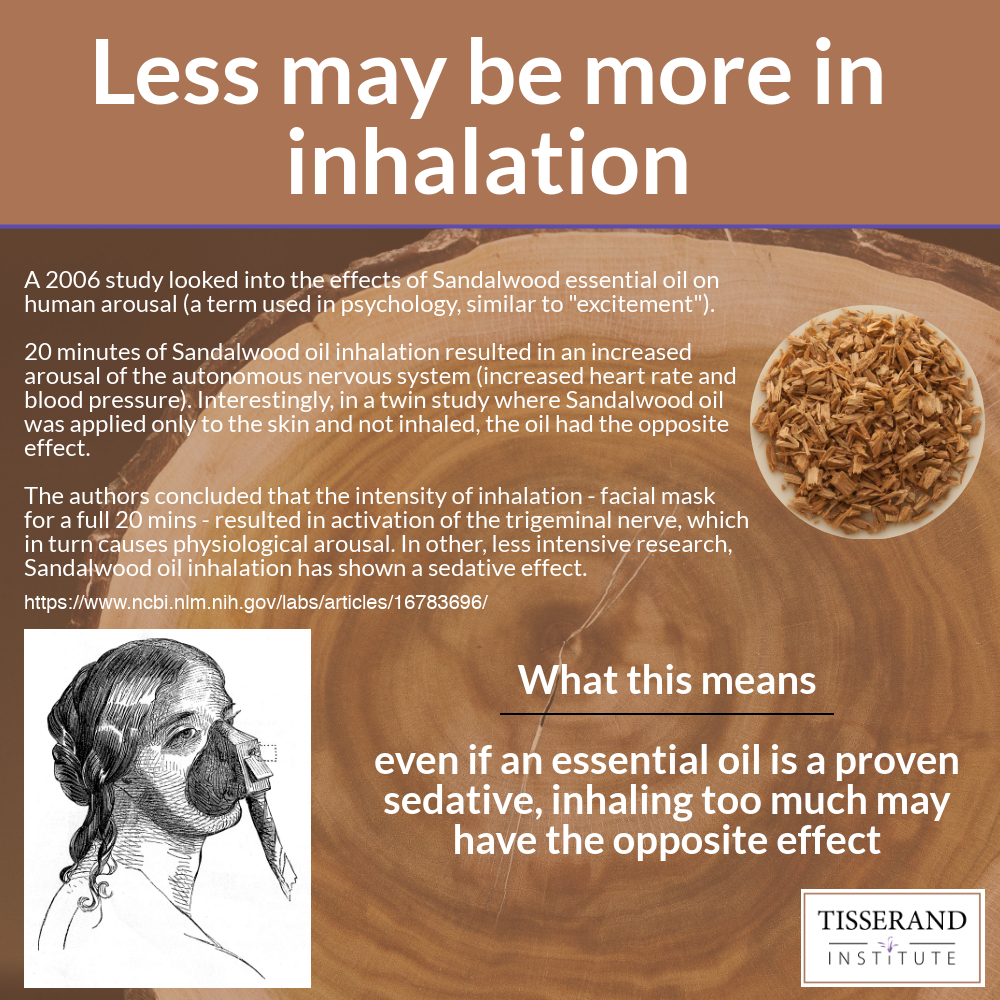
by Hana Tisserand | Mar 8, 2017
A study of Sandalwood inhalation and its effects on the autonomous nervous system (ANS) showed an increase in heart rate and blood pressure after 20 minutes of inhaling the essential oil through a breathing mask. This finding is in conflict with other studies, showing...
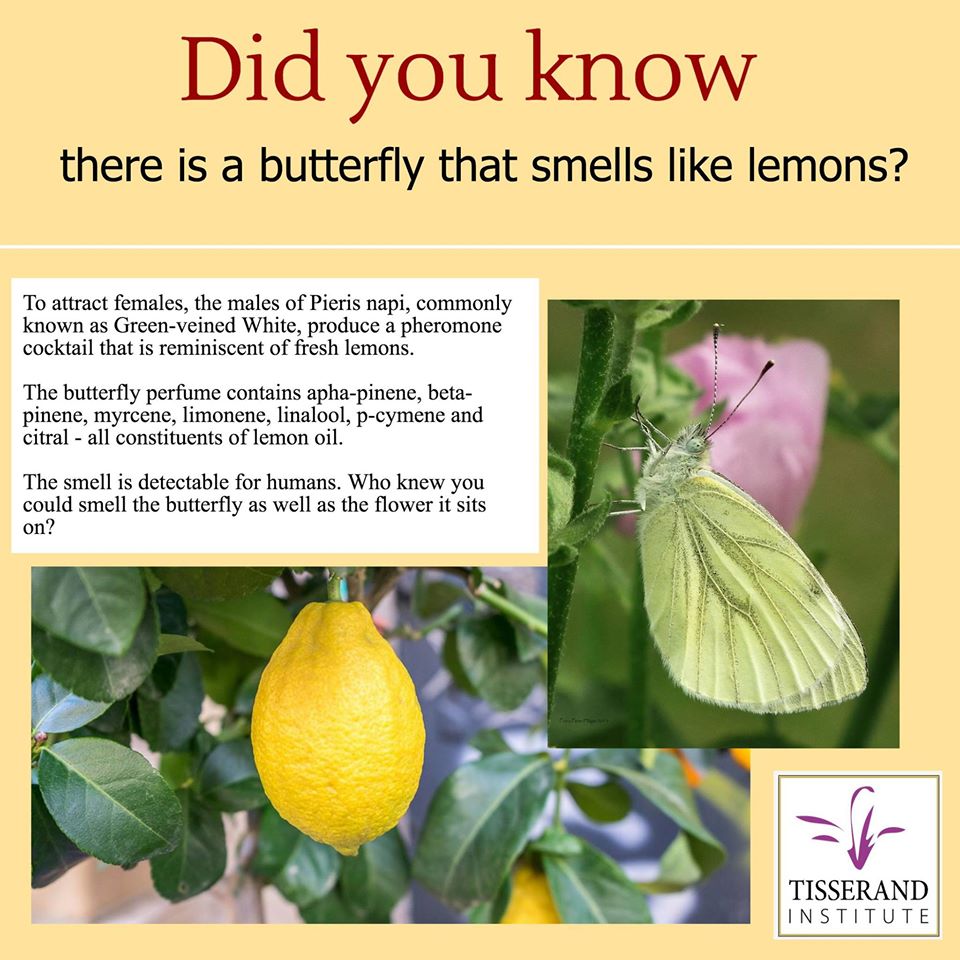
by Hana Tisserand | Mar 8, 2017
To attract females, the males of Pieris napi, commonly known as Green-veined White, produce a pheromone cocktail that is reminiscent of fresh lemons. The butterfly perfume contains apha-pinene, beta-pinene, myrcene, limonene, linalool, p-cymene and citral – all...
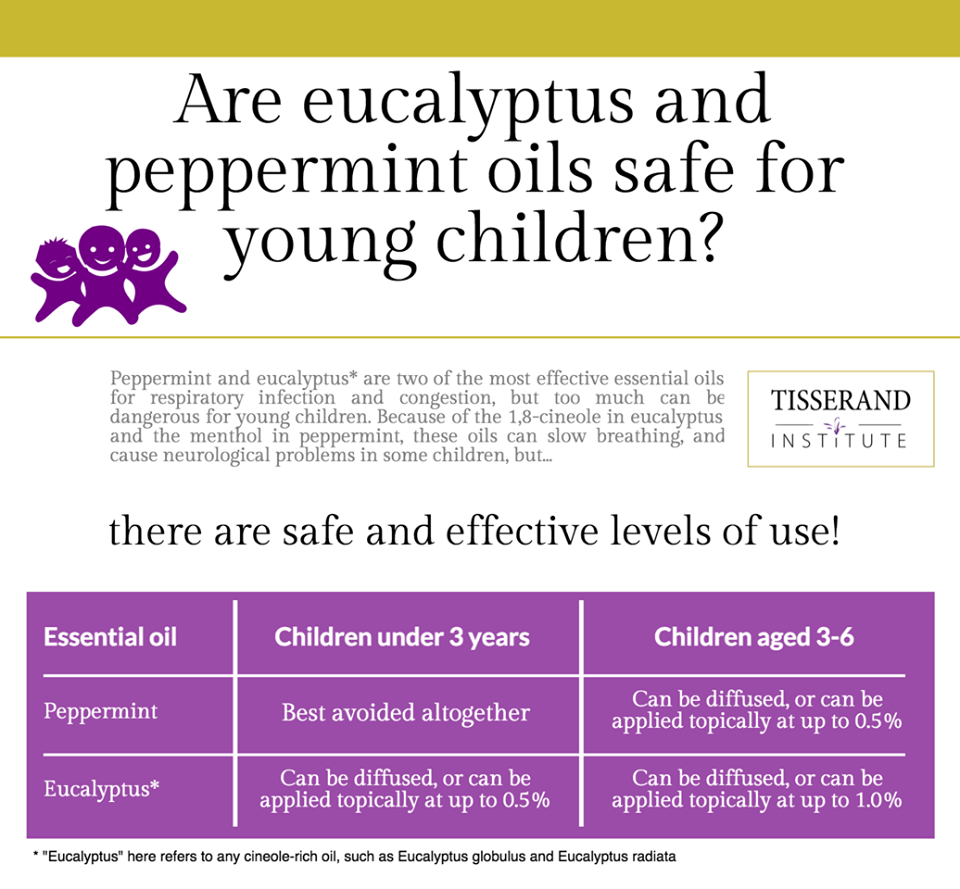
by Hana Tisserand | Mar 8, 2017
An important update on kids and inhalation safety. I believe these guidelines are super-safe, if anything a little over-cautious. If you’re wondering about other types of eucalyptus oil, E. citriodora is safe for young kids, though is less likely to be...
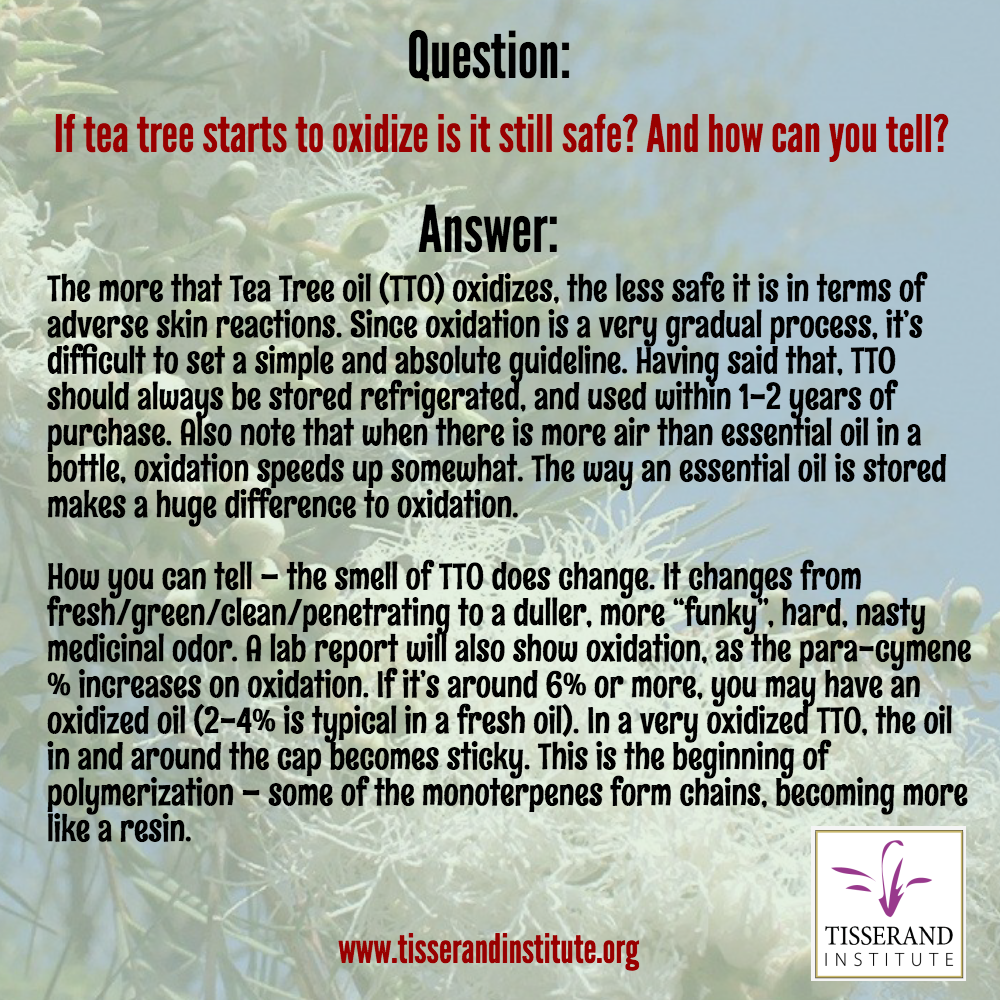
by Hana Tisserand | Mar 8, 2017
Q&A Essential Oil Safety edition Question (by Helen Bairstow): I’d like to know if tea tree starts to oxidize is it still safe? And how can you tell? Answer: The more that Tea Tree oil (TTO) oxidizes, the less safe it is in terms of adverse skin reactions....
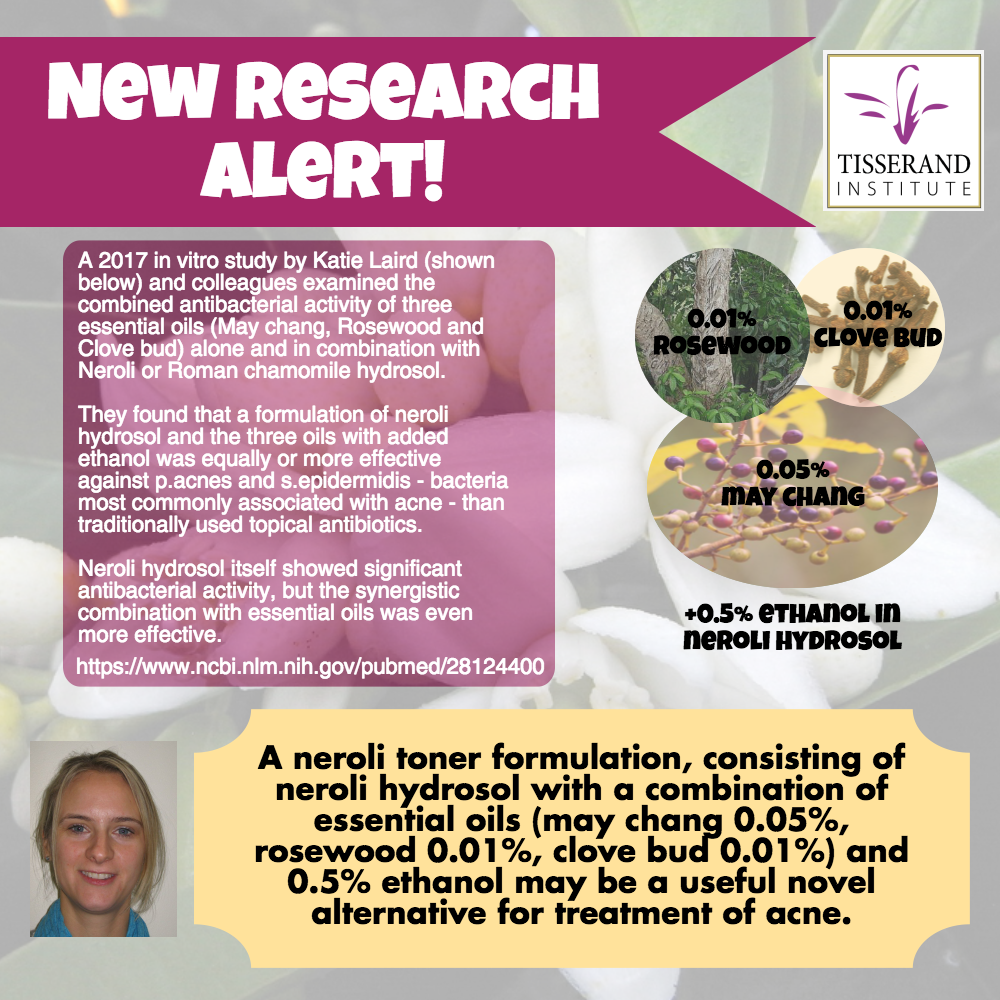
by Hana Tisserand | Mar 8, 2017
New research alert! A new study shows the antibacterial potential of a synergistic formulation of Neroli hydrosol with the essential oils of May chang, Clove bud and Rosewood in acne treatment. The Neroli hydrosol very effective alone, and worked better than Roman...
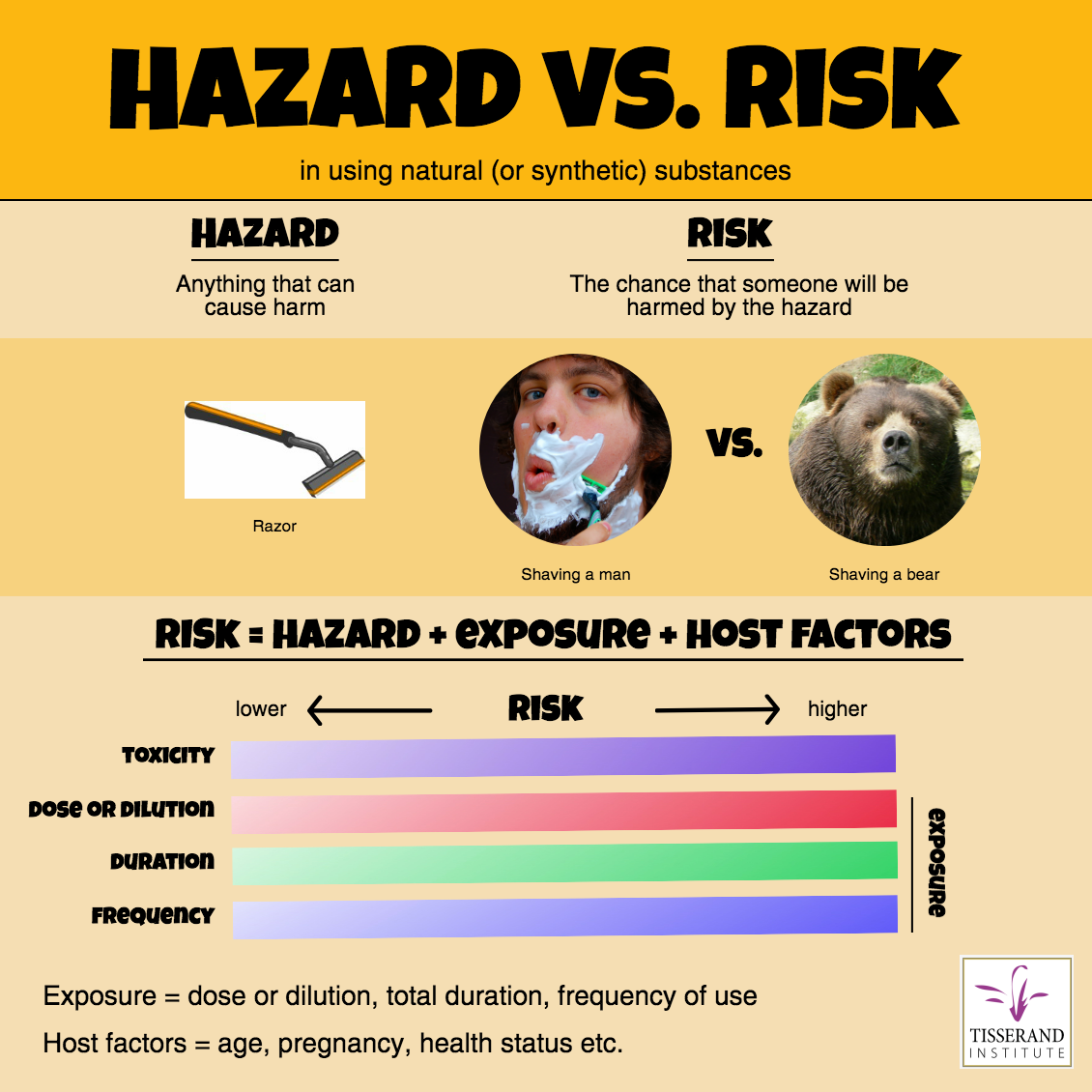
by Tisserand Institute | Feb 7, 2017
What is the difference between hazard and risk? We exist in a chemical soup. We eat, breathe and drink chemicals. We are made of chemicals and so is everything else. Especially in this industrial age, it’s important for us to identify significant risks and to...







